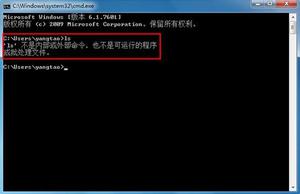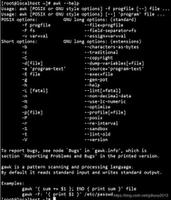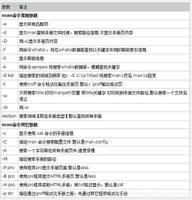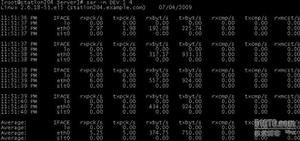如何测试Linux命令运行时间?

良许在工作中,写过一个 Shell 脚本,这个脚本可以从 4 个 NTP 服务器轮流获取时间,然后将最可靠的时间设置为系统时间。
因为我们对于时间的要求比较高,需要在短时间内就获取到正确的时间。所以我们就需要对这个脚本运行时间进行测试,看看从开始运行到正确设置时间需要花费多少时间。
其实在工作中,还有很多情况下需要测试一个脚本或者程序运行多少时间,特别是对于时间性要求比较高的系统更是如此。
对于时间的测试,我们可以用到一个命令:time 。下面我们就详细看看如何使用 time 命令来对脚本/命令进行测时。
1. time 命令基本用法
time 命令最基本的用法,就是 time + 命令 ,比如:
$ time ping baidu.comPING baidu.com (123.125.114.144) 56(84) bytes of data.
64 bytes from 123.125.114.144 (123.125.114.144): icmp_seq=1 ttl=56 time=2.83 ms
64 bytes from 123.125.114.144 (123.125.114.144): icmp_seq=2 ttl=56 time=2.77 ms
…………
^C
--- baidu.com ping statistics ---
8 packets transmitted, 8 received, 0% packet loss, time 10818ms
rtt min/avg/max/mdev = 2.765/2.808/2.862/0.039 ms
real 0m11.173s
user 0m0.004s
sys 0m0.002s
在结果里,real 表示从我们执行 ping 命令到最终按 ctrl+c 终止这段时间所耗费的时间;user 及 sys 分别表示 ping 命令在用户空间及内核空间所运行的时间。
2. 将时间信息写入文件
如果我们想把时间信息直接写入到文件,而不是显示在屏幕上,那么我们可以使用 -o 选项,并指定写入的文件路径。
$ /usr/bin/time -o /home/alvin/time-output.txt ping baidu.com执行这个命令后,ping 命令的输出结果依然会在终端里,而 time 命令的结果就写入到我们所指定的 time-output.txt 文件里。
-o 选项表示输出文件不存在就创建,如果存在的话就直接覆盖重写。如果我们不想覆盖重写,而是想追加在文件后面,我们可以使用 -a 选项。
$ /usr/bin/time -a /home/smart/time-output.txt ping linoxide.com3. 显示更详细的时间信息
time 命令不带选项的话,显示的信息量比较少,如果我们想获得更详细的信息,那么我们可以使用 -v 选项。
$ /usr/bin/time -v ping baidu.comPING baidu.com (123.125.114.144) 56(84) bytes of data.
64 bytes from 123.125.114.144 (123.125.114.144): icmp_seq=1 ttl=56 time=2.75 ms
64 bytes from 123.125.114.144 (123.125.114.144): icmp_seq=2 ttl=56 time=2.76 ms
64 bytes from 123.125.114.144 (123.125.114.144): icmp_seq=3 ttl=56 time=2.85 ms
64 bytes from 123.125.114.144 (123.125.114.144): icmp_seq=4 ttl=56 time=2.77 ms
^C
--- baidu.com ping statistics ---
4 packets transmitted, 4 received, 0% packet loss, time 3300ms
rtt min/avg/max/mdev = 2.751/2.785/2.851/0.075 ms
Command being timed: "ping baidu.com"
User time (seconds): 0.00
System time (seconds): 0.00
Percent of CPU this job got: 0%
Elapsed (wall clock) time (h:mm:ss or m:ss): 0:03.64
Average shared text size (kbytes): 0
Average unshared data size (kbytes): 0
Average stack size (kbytes): 0
Average total size (kbytes): 0
Maximum resident set size (kbytes): 2140
Average resident set size (kbytes): 0
Major (requiring I/O) page faults: 0
Minor (reclaiming a frame) page faults: 626
Voluntary context switches: 10
Involuntary context switches: 0
Swaps: 0
File system inputs: 0
File system outputs: 0
Socket messages sent: 0
Socket messages received: 0
Signals delivered: 0
Page size (bytes): 4096
Exit status: 0
这个结果信息就相当详细了,我们可以获取到足够多我们所需要的信息。
4. 自定义输出格式
默认情况下,time 命令只输出 real,usr,sys 三个内容,如果我们想要个性化一些,算定义它的输出格式,time 命令也是支持的。time 命令支持的格式有很多,如下所示:
C - Name and command line arguments usedD - Average size of the process"s unshared data area in kilobytes
E - Elapsed time in a clock format
F - Number of page faults
I - Number of file system inputs by the process
K - Average total memory use of the process in kilobytes
M - Maximum resident set the size of the process during the lifetime in Kilobytes
O - Number of file system outputs by the process
P - Percentage of CPU that the job received
R - Number of minor or recoverable page faults
S - Total number of CPU seconds used by the system in kernel mode
U - Total number of CPU seconds used by user mode
W - Number of times the process was swapped out of main memory
X - Average amount of shared text in the process
Z - System"s page size in kilobytes
c - Number of times the process was context-switched
e - Elapsed real time used by the process in seconds
k - Number of signals delivered to the process
p - Average unshared stack size of the process in kilobytes
r - Number of socket messages received by the process
s - Number of socket messages sent by the process
t - Average resident set size of the process in kilobytes
w - Number of time the process was context-switched voluntarily
x - Exit status of the command
如果我们想要输出以下这样的格式:
Elapsed Time = 0:01:00, Inputs 2, Outputs 1我们可以这样自定义:
$ /usr/bin/time -f "Elapsed Time = %E, Inputs %I, Outputs %O" ping baidu.comPING baidu.com (220.181.38.148) 56(84) bytes of data.
64 bytes from 220.181.38.148 (220.181.38.148): icmp_seq=1 ttl=54 time=1.82 ms
64 bytes from 220.181.38.148 (220.181.38.148): icmp_seq=2 ttl=54 time=1.86 ms
^C
--- baidu.com ping statistics ---
4 packets transmitted, 4 received, 0% packet loss, time 3003ms
rtt min/avg/max/mdev = 1.825/1.859/1.879/0.056 ms
Elapsed Time = 0:03.92, Inputs 0, Outputs 0
如果你想让输出的结果有换行,可以在对应的地方添加
,比如:
$ /usr/bin/time -f "Elapsed Time = %E Inputs %I
Outputs %O" ping baidu.com
这样输出的结果就类似于这样:
Elapsed Time = 0:03.92Inputs 0
Outputs 0
看完的都是真爱,点个赞再走呗?您的「三连」就是良许持续创作的最大动力!
- 关注原创公众号「良许Linux」,第一时间获取最新Linux干货!
- 公众号后台回复【资料】【面试】【简历】获取精选一线大厂面试、自我提升、简历等资料。
- 关注我的博客:lxlinux.net
以上是 如何测试Linux命令运行时间? 的全部内容, 来源链接: utcz.com/z/515119.html









